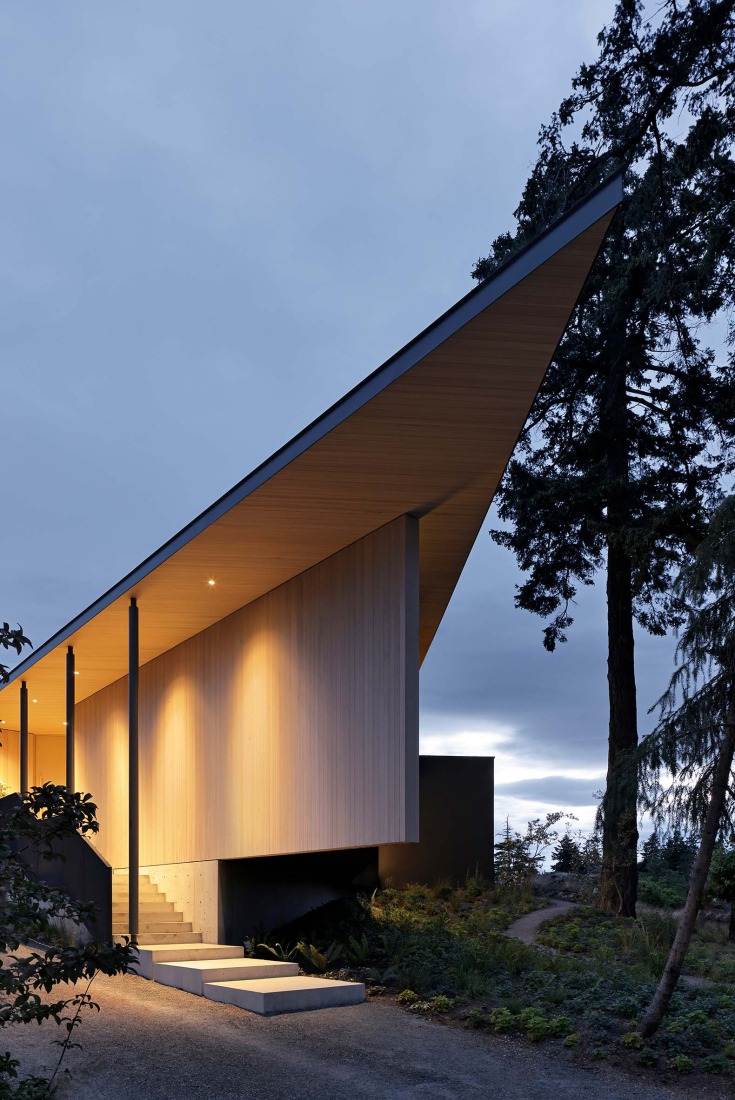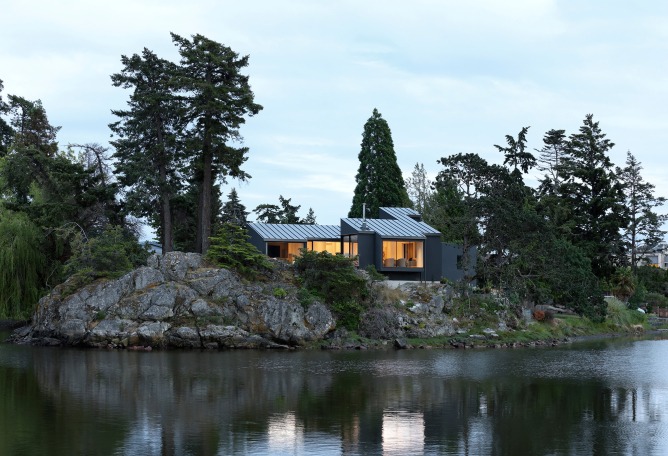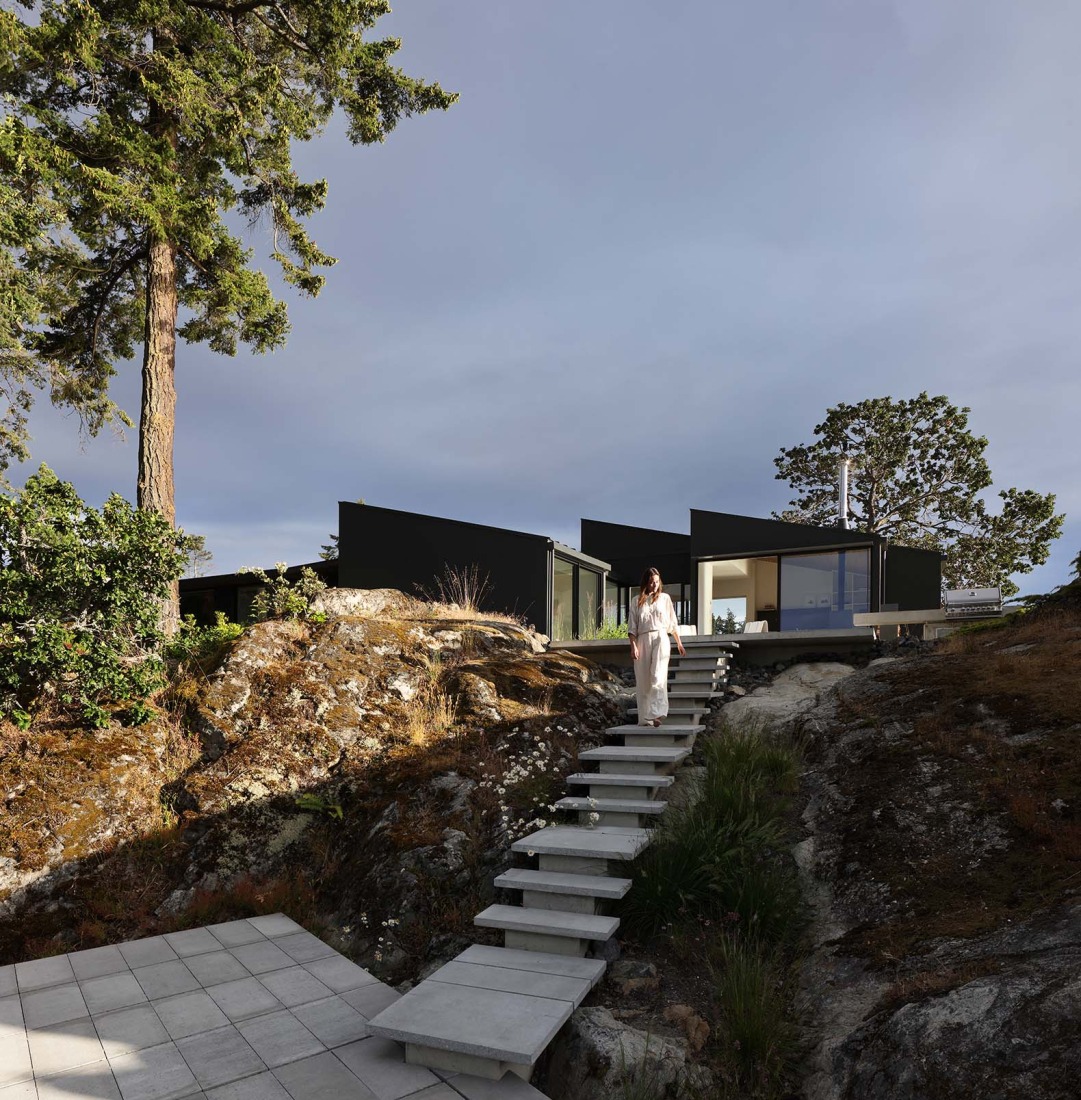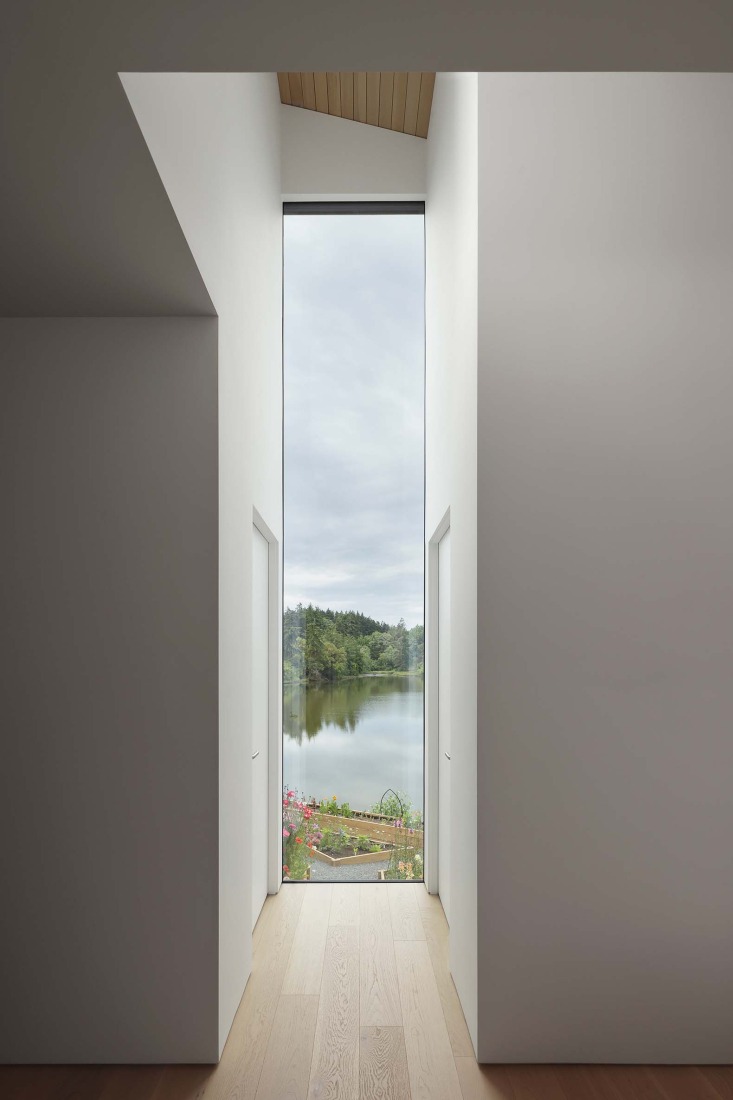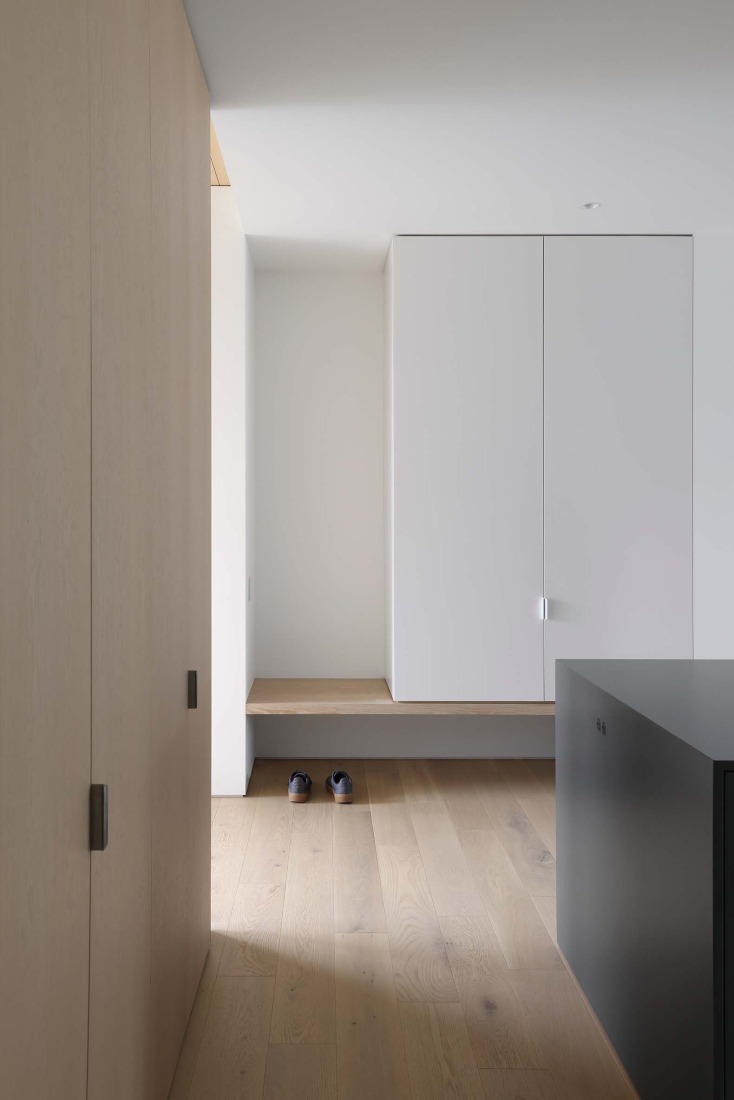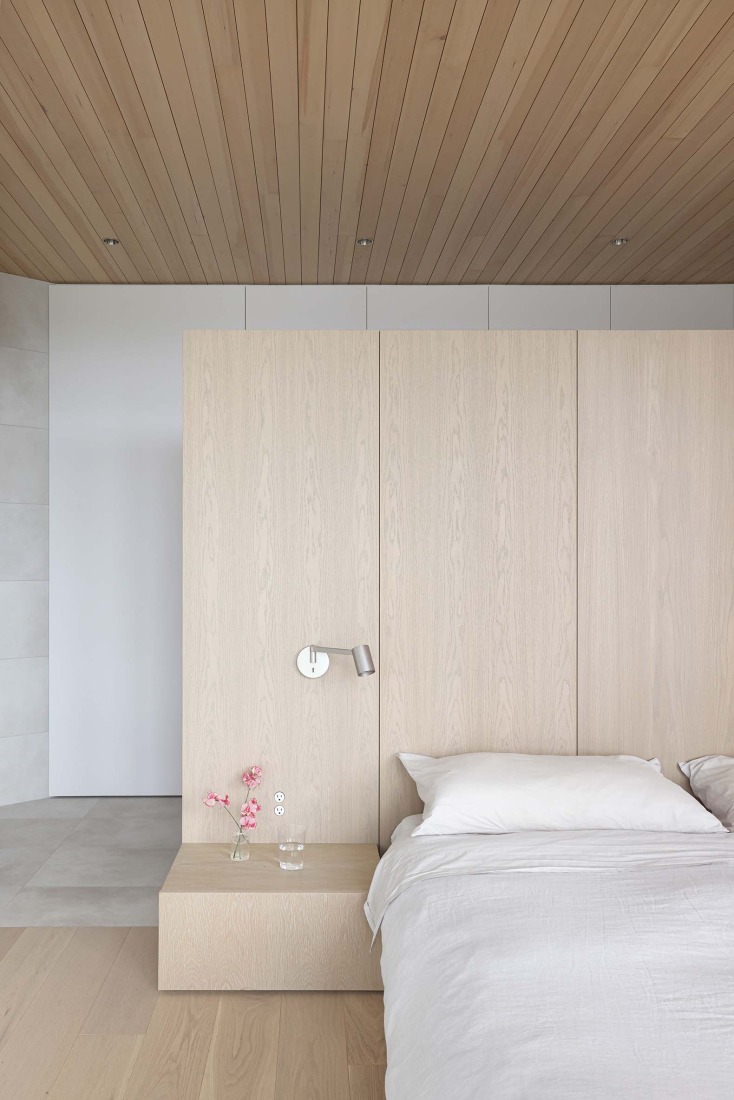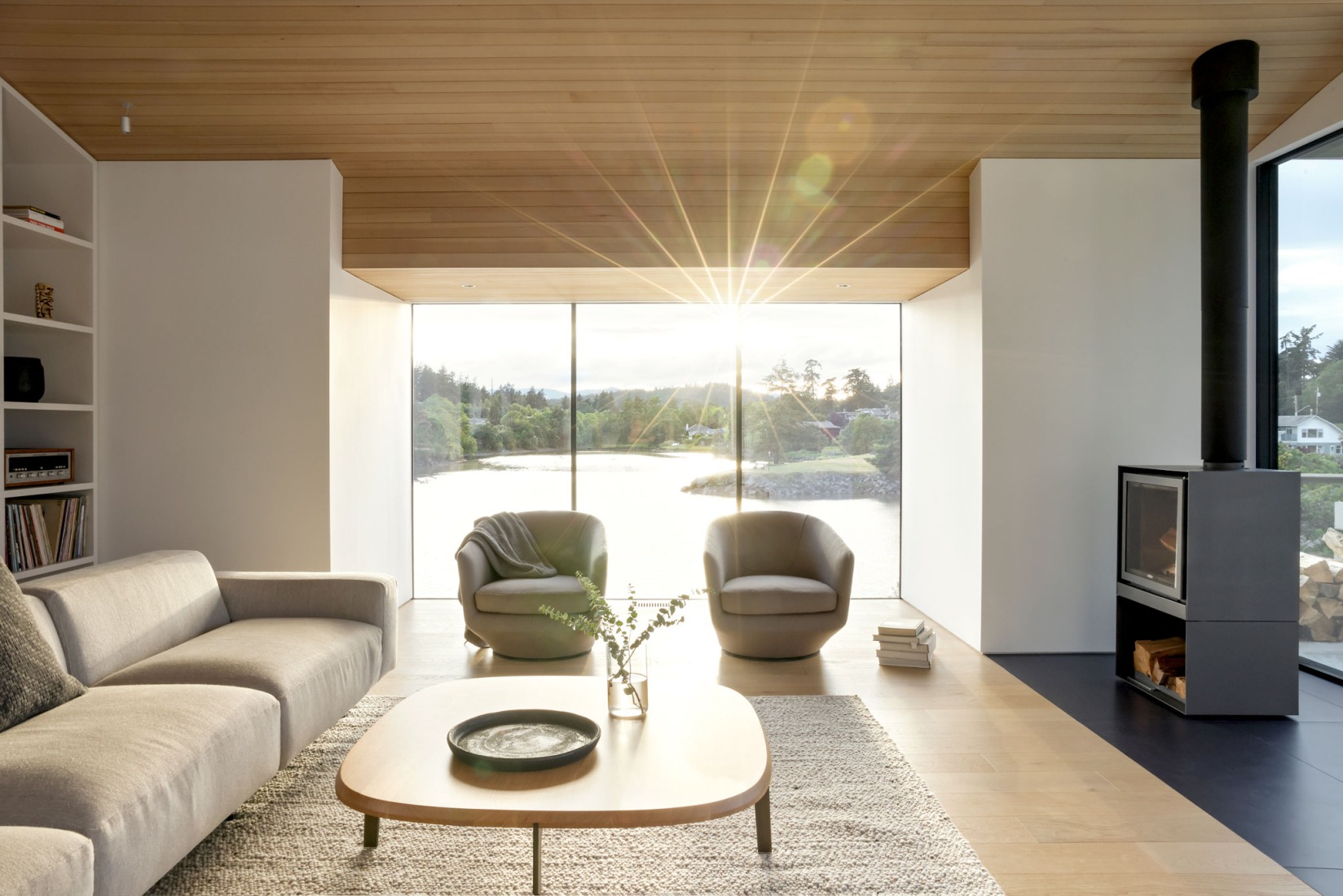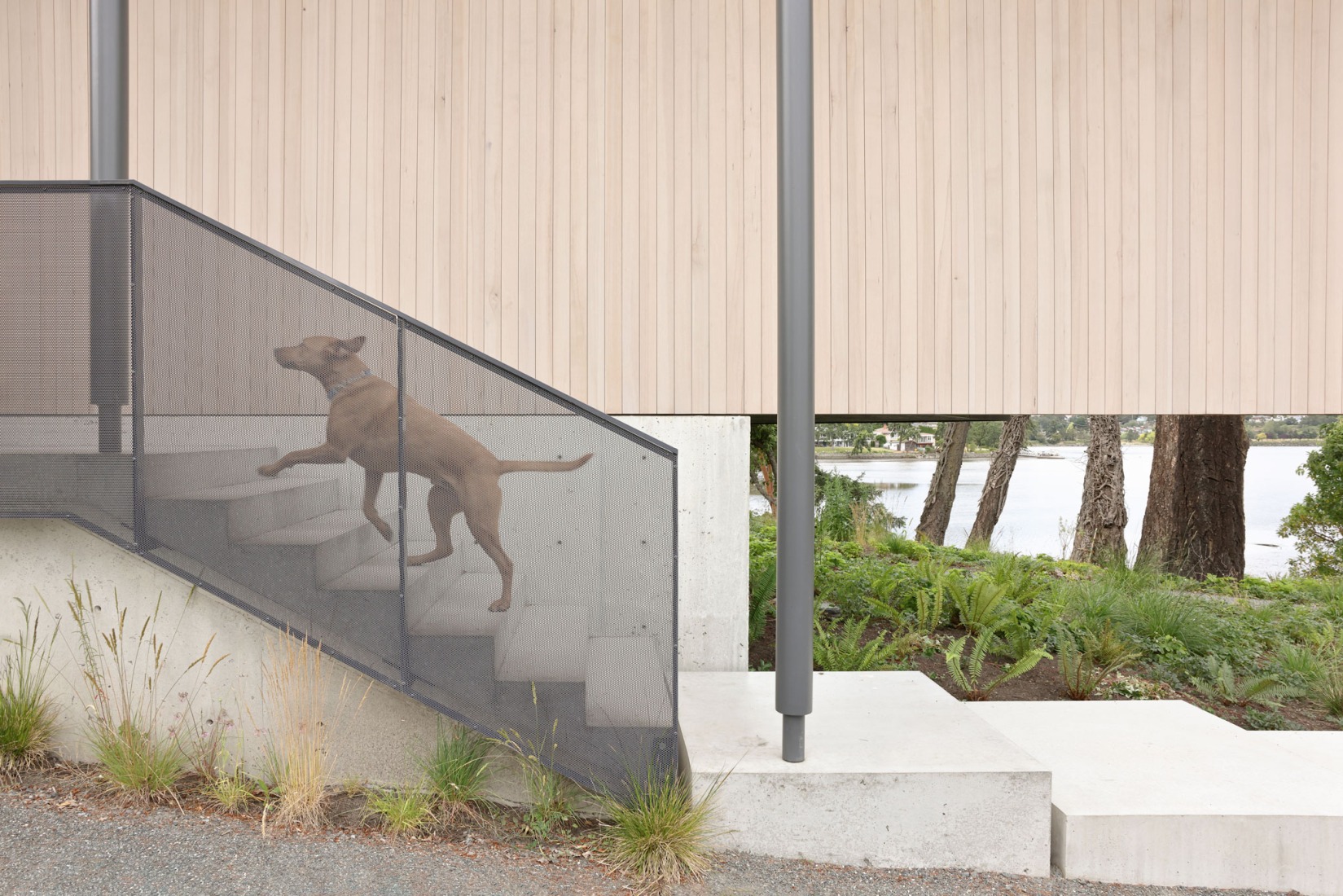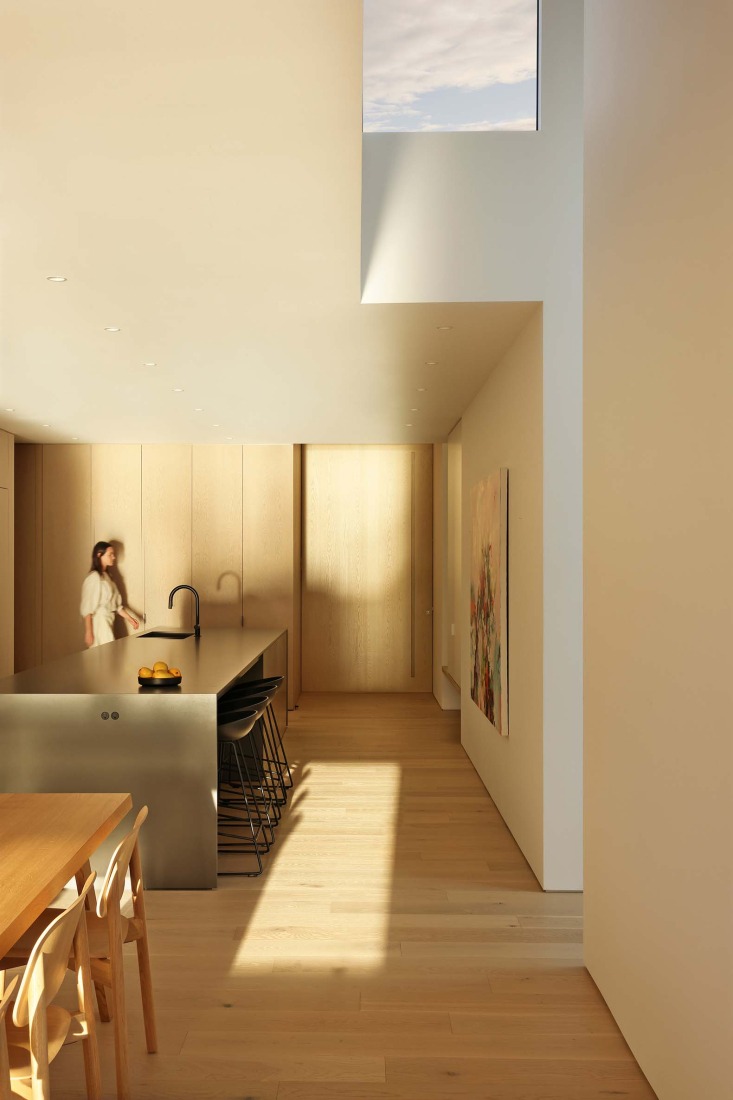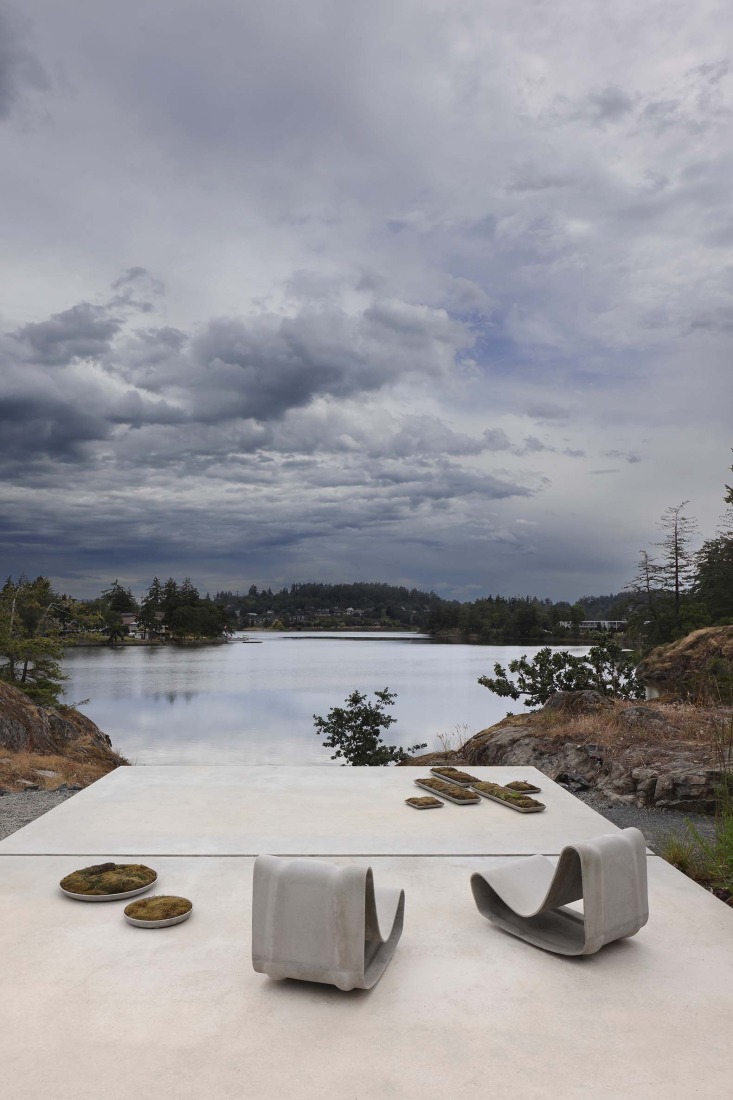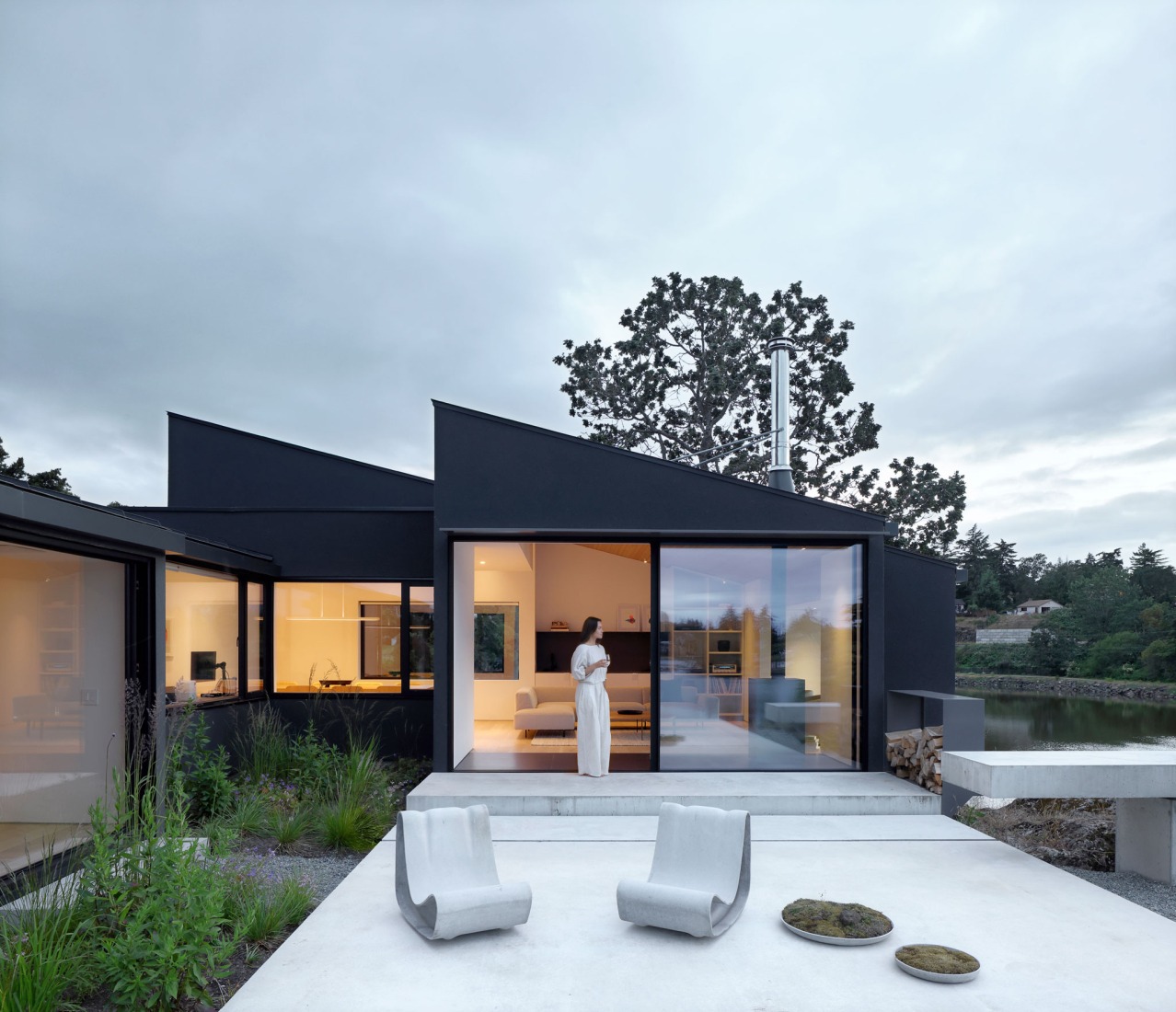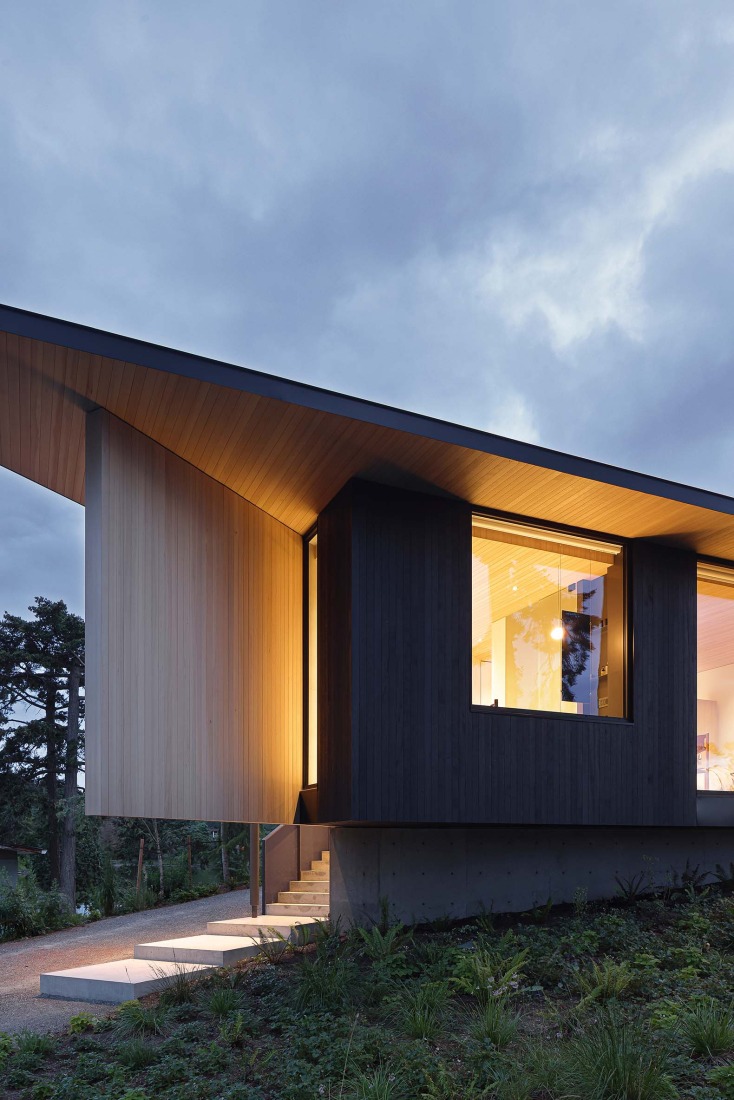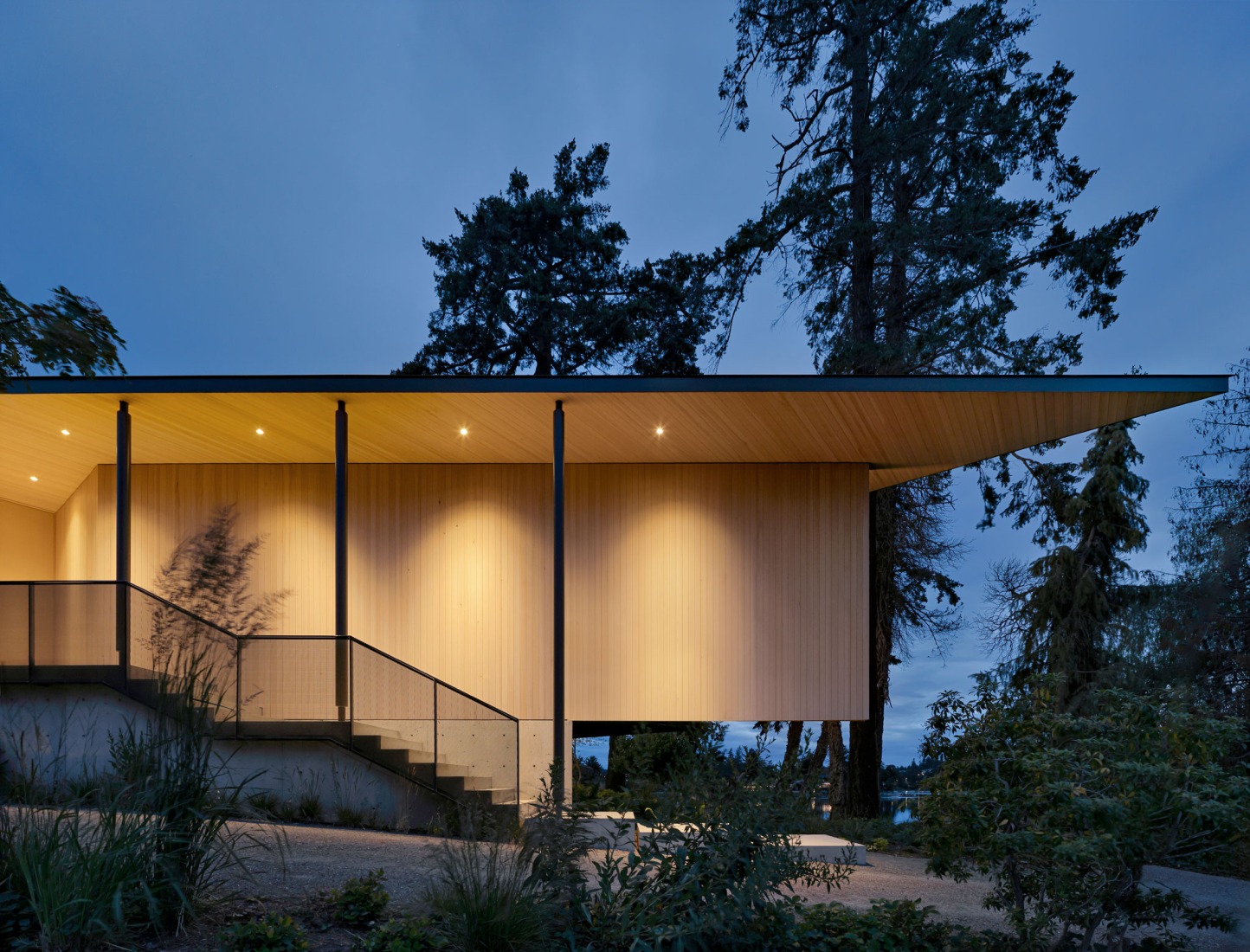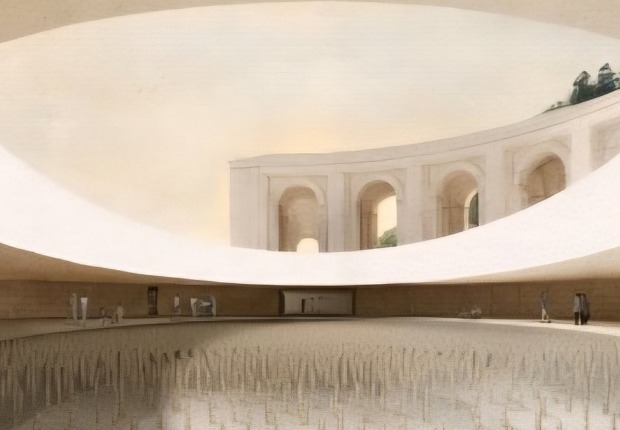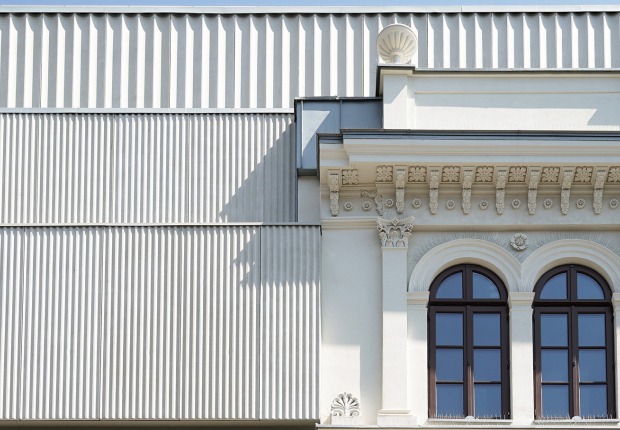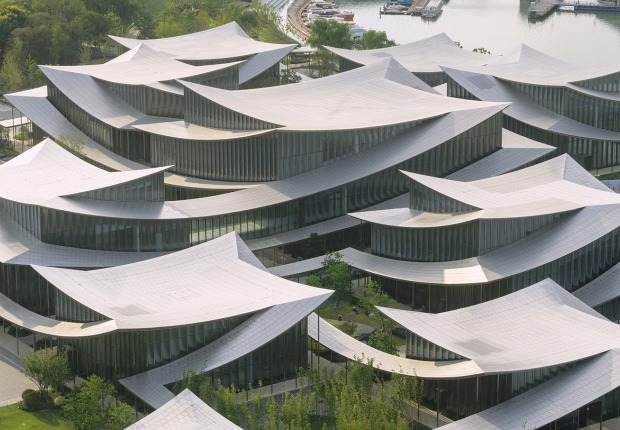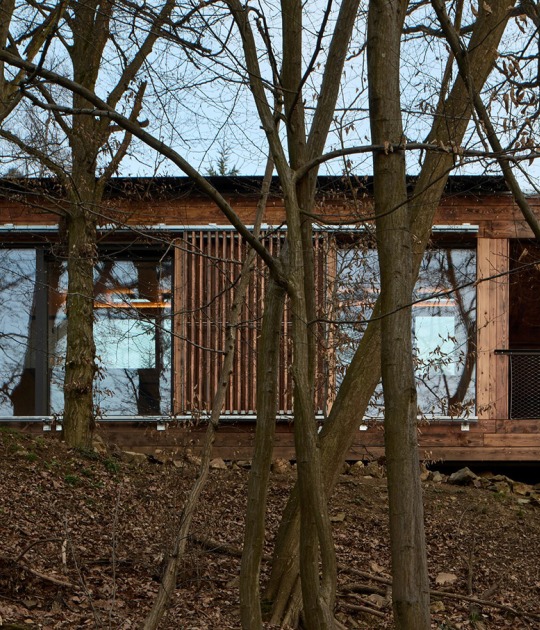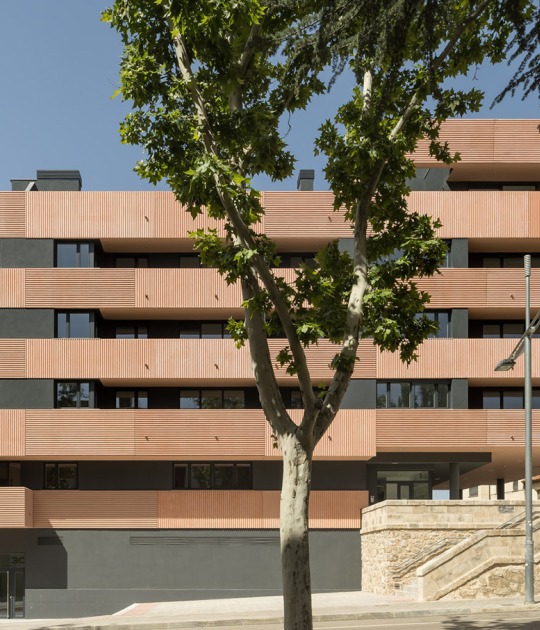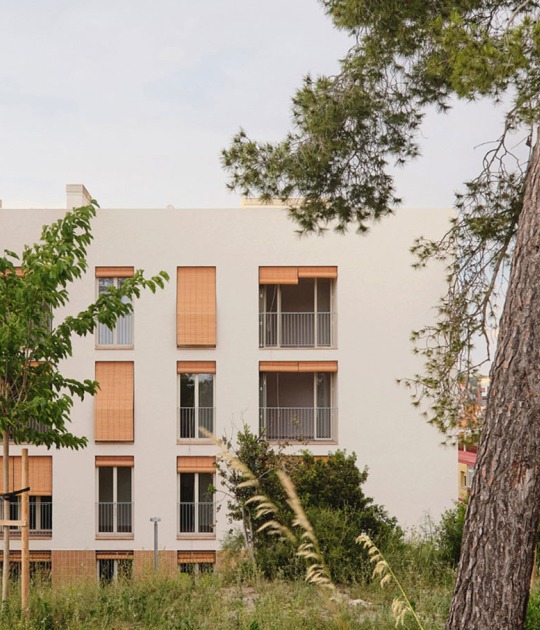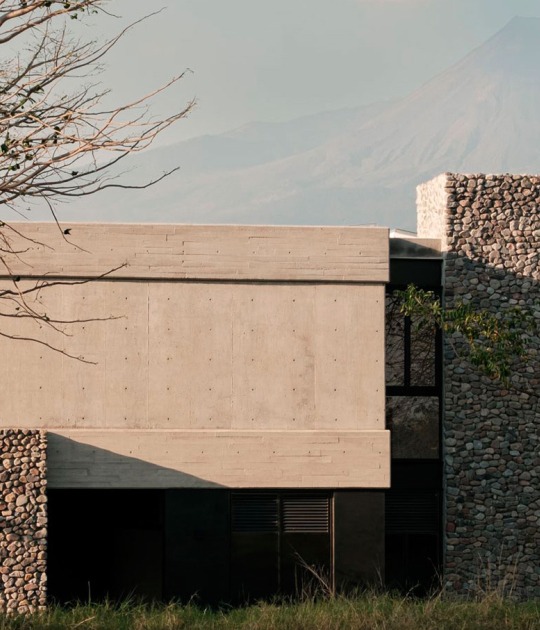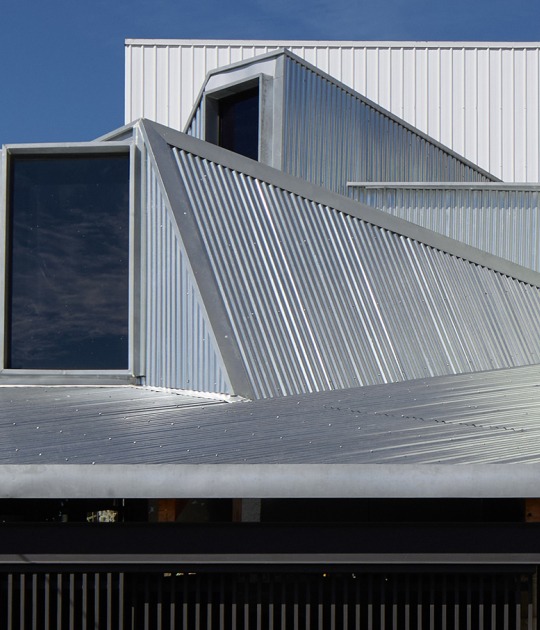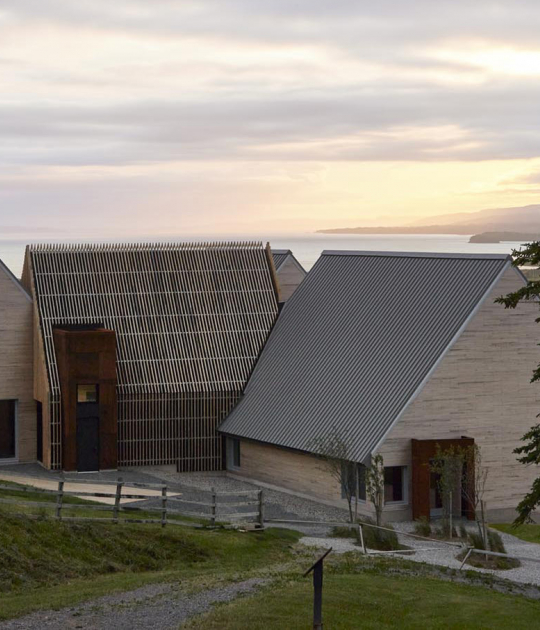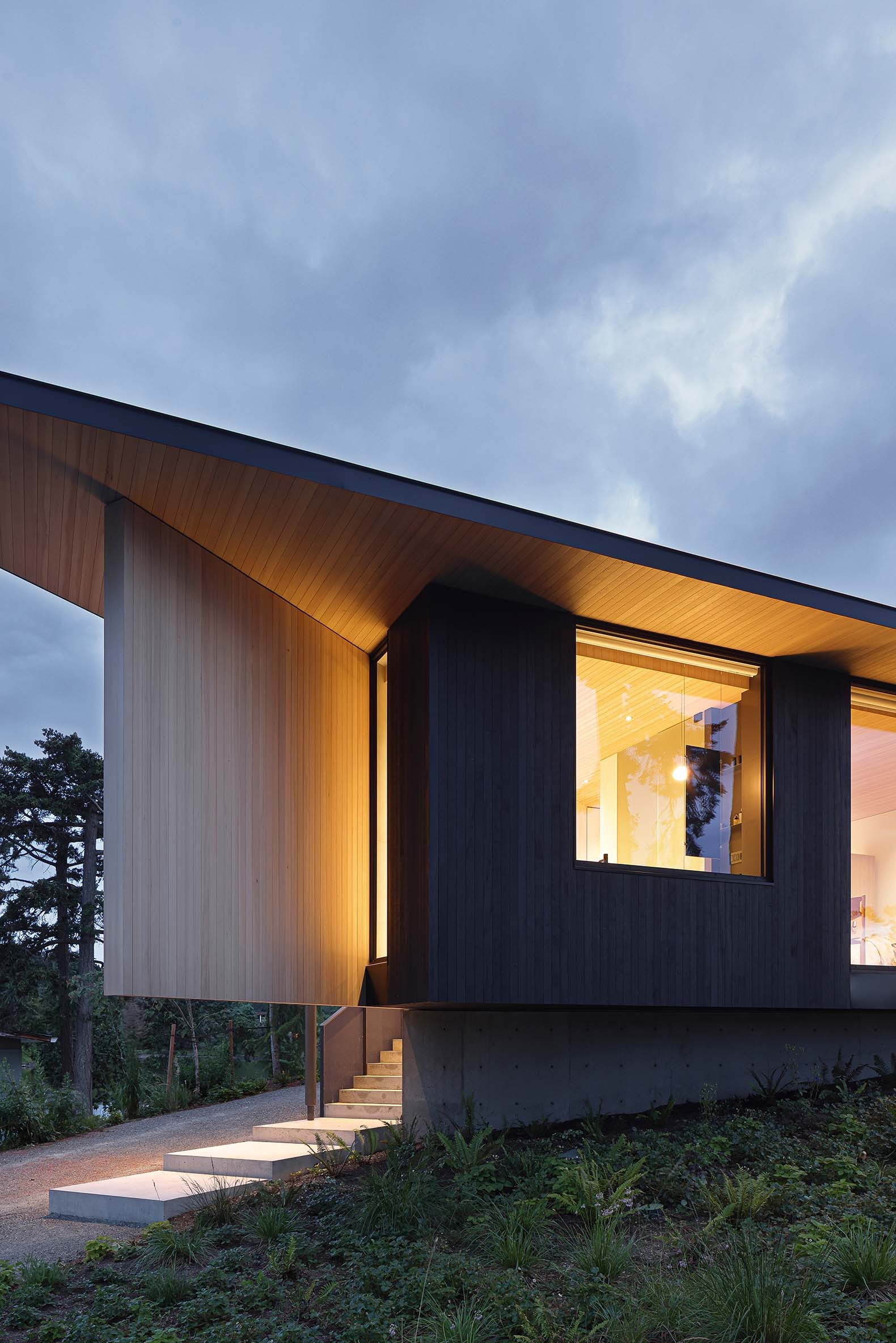
Given the delicate natural setting, Splyce Desing proposed the option with the least ecological impact: conservation, updating, and renovation as the most cost-effective and environmentally friendly option for the new home.
The alignment and placement of the new extension were defined by local codes, which set out strict setbacks from the water’s edge, dictating an irregularly shaped building envelope for the addition of a compact single-storey extension. Outside, it features a covered entrance walkway, and inside, it houses the master bedroom and en-suite bathroom.

Shoreline House by Splyce. Photograph by Ema Peter.
The extension was designed with a minimal footprint, integrating the new volume lightly on the terrain, with recessed concrete foundation walls to avoid over-excavation in the marine protected area. The structure appears to hover, with its roof soaring 13 feet above a cantilevered screen wall that extends in a prow-like point.
The new entrance leads directly into the kitchen, dining room, and the main living area, with access to a large deck that extends this space closer to the water. The extension also provides a new guest room.
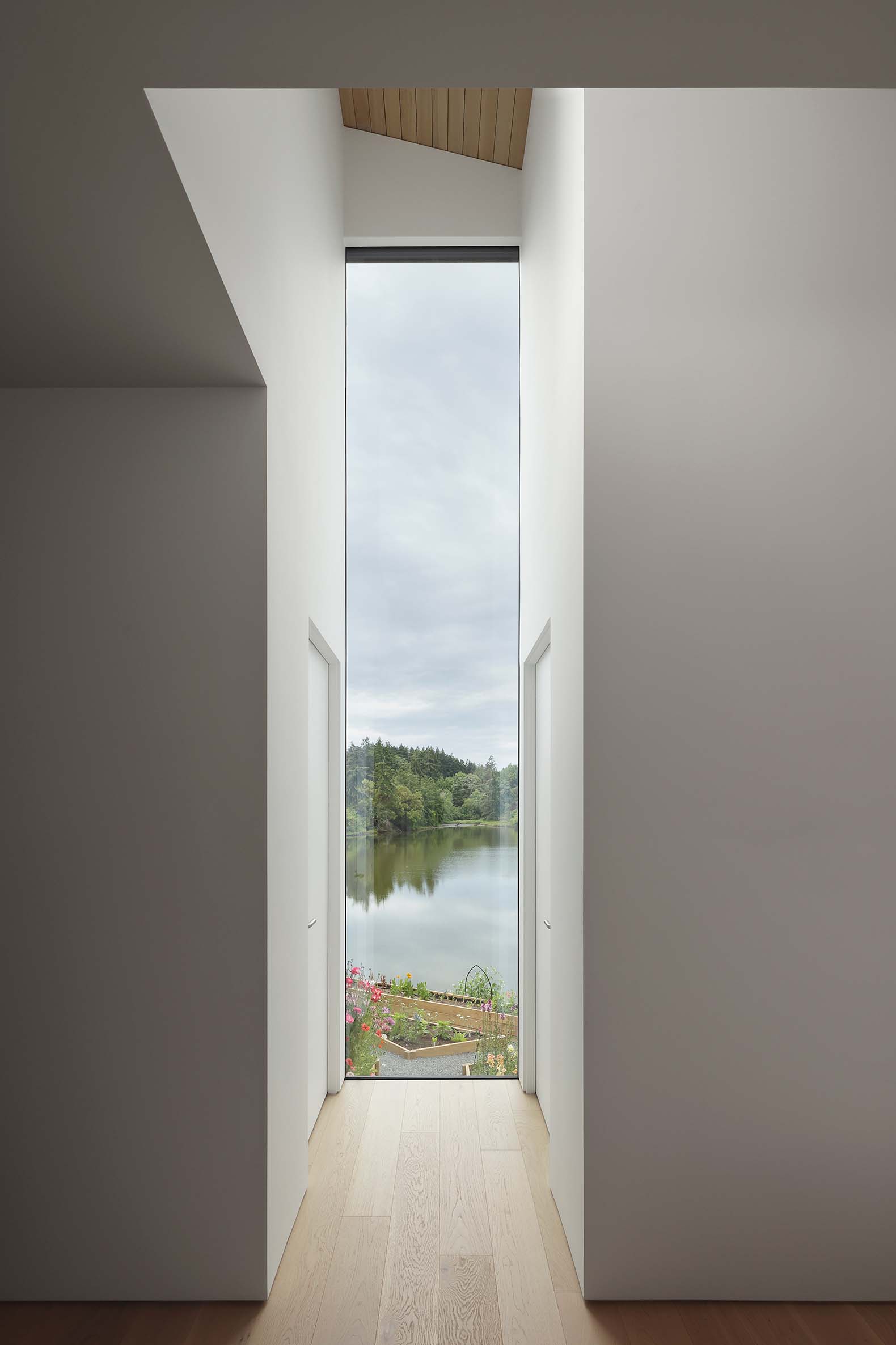
Shoreline House by Splyce. Photograph by Ema Peter.
Project description by Splyce Desing
Perched at the end of a suburban street where single-family homes give way to rugged coastline, the property is defined by rocky outcrops, mature fir and oak trees, and sweeping 180-degree views of the inlet.
New construction versus renovation
The clients approached Splyce after purchasing the 1960s home with a vision for a new residence. Given the site’s immediate proximity to the ocean and its sensitive habitat, the studio proposed the option with the least ecological impact: retaining and renovating the existing structure, while adding a compact, single-storey extension.
Environmental considerations
Strict waterfront setbacks dictated an irregularly shaped building envelope for the addition, which houses the primary bedroom and ensuite. Designed with a minimal footprint, the new volume lightly touches the terrain, with recessed concrete foundation walls to avoid over-excavation in the marine protected area. The structure appears to hover, with its roof soaring 13 feet above a cantilevered screen wall that extends to a dramatic point.

Choreographed approach
Approach to the home is choreographed by a colonnade-lined staircase leading to the front door. The addition, clad in light-stained cedar, contrasts with the shed-roof forms of the original house, where dark finishes echo the granite shoreline. Throughout, the design explores the meeting points of old and new, wild and cultivated, interior and exterior.
Landscape matters
In the landscape, patios and pathways integrate seamlessly with native vegetation and topography. Expansive windows—some with concealed frames to dissolve the boundary between inside and out, others precisely placed to frame specific vistas—capture shifting light and ocean reflections, animating the interiors throughout the day.
Conclusion
Shoreline House stands as a testament to Splyce Design's ability to create contemporary architecture that is rooted in place, attuned to environmental context, and enriched by the dialogue between landscape and building.

